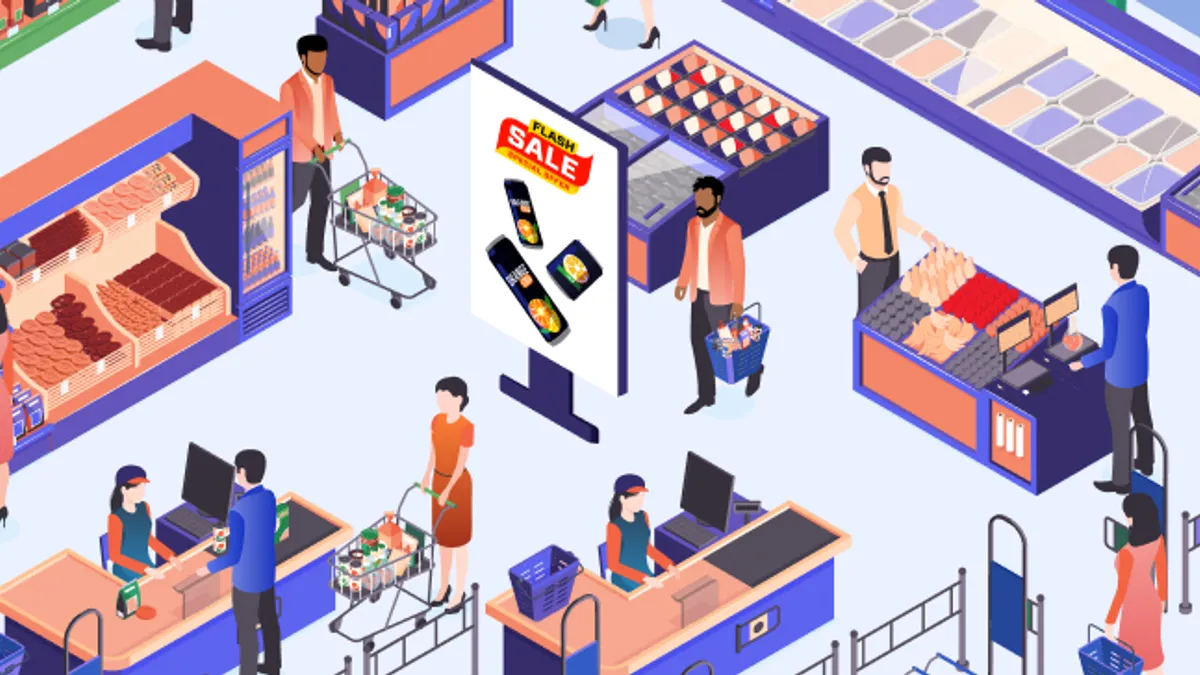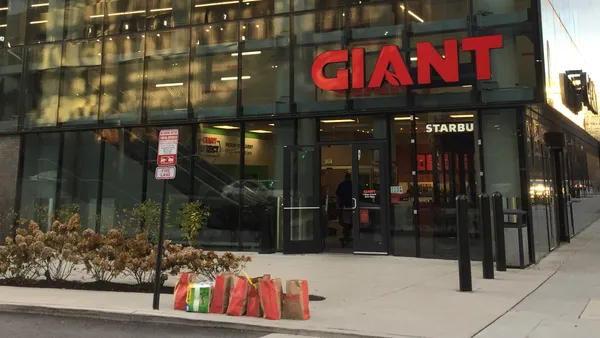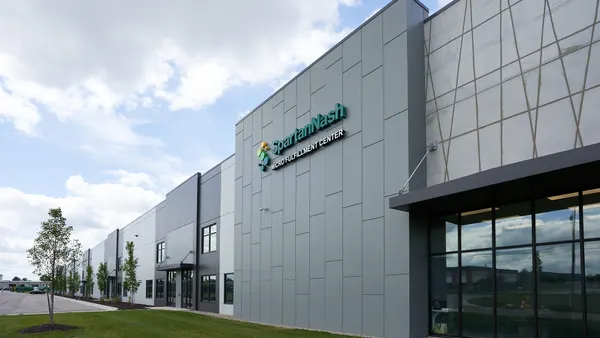Once a daring experiment for established retailers, the retail media network (RMN) is rapidly maturing. Amazon may have kickstarted the trend, but big-box retailers from Albertsons to Kohls, Walmart, Walgreens and many others now run and profit from their own digital advertising networks, and media buyers are taking note. Retail media is projected to reach $52.21 billion by 2023, according to eMarketer, and more than 60 percent of consumer packaged goods (CPG) brands are planning to increase retail media spend next year (Wakefield Research).
RMNs have traditionally focused on delivering messages via online and mobile advertising, but marketers are clamoring for more in-store display options, and grocery and drug stores that rise to meet this demand stand to reap the greatest reward. Whether you’re looking to build an RMN from the ground up or incorporate more in-store media options into your existing network, here are a few tips:
Lean into omnichannel
Between digital platforms, in-store displays or a combination thereof, retailers have access to a wealth of first-party data, including shopper habits and patterns. That data can be repurposed across channels to enhance customer interactions in and outside the store. It’s also attractive to advertisers, whose third-party data options are dwindling as the end of the cookie era draws near.
For these reasons, loyalty programs that track customer purchasing behavior in exchange for deals have become commonplace. Customers enter their phone number at the register for discounts, or receive loyalty emails that remind them to redeem coupons in-store. In-store displays can also be used to remind customers to load digital offers to their store apps prior to check-out.
The omnichannel options are endless, but whatever the strategy, delivering tailored, up-to-the-minute promotions across channels can help influence shopping behaviors, directing customers into various store areas and driving purchase behavior.
Mine and track data strategically
Your first party data – information you collect directly from your customers with their permission – is invaluable to your business and advertisers. Demographic data, for instance, can offer insight into who is shopping and when – information that can help grocery and drug store brands and CPG advertisers tailor messaging to shoppers.
To this end, data technology used to engage with customers outside of store walls must also support similar interactions in-store. With the right combination of tools, there’s no reason you can’t apply a data collection plan in place for your digital business to your physical stores.
Determining the available data and technology ahead of integrating in-store signage into an RMN is crucial to this process; it will make it easier to deliver relevant messaging that enhances shopper journeys while also meeting advertising goals. Tracking and analyzing this data over time can also advance the in-store experience by making it easier to adapt messaging as audiences change.
Think beyond coupons
In-store signage may provide an ideal format for promotional content but building meaningful relationships with shoppers requires more of a humanistic approach. To this end, creatively combining in-store display content with online and mobile messaging that can help improve customers’ daily lives is a smart strategy.
Many grocery and drugstore brands are just beginning to experiment in this arena. Retailers, for instance, might publish on-trend engagement copy (i.e., new flavors, product buzzwords, and organic choices) on screens throughout the store. Others might display a QR code that pulls up 30-minute meal recipes and an ingredient checklist customized to a shopper’s purchasing history.
Don’t underestimate the importance of the right technology
Advancements in display advertising technology are introducing new possibilities. Just look to Walgreen’s Cooler Screens installations, EV charging display stations and hyper-realistic 3D billboards as modern examples. In addition to these innovations, the software behind them is rapidly progressing, with new tools emerging to enable brand lift and sales studies, along with measurements from first- or third-party data.
Growing an RMN with in-store media requires a highly efficient, scalable technology back-end that lets you reach shoppers across their journey. Ideally, the solution can easily ingest data, automate scheduling with high levels of intelligence and deliver customized messaging — across locations and at the shelf level. Automated ad sales capabilities are also a must, which demand-side platforms (DSP) enable.
Many RMN leaders already run DSPs that automate ad sales and gather retail data and analytics (i.e, Walmart Connect and Kroger’s 84.51°). However, most RMNs to date are largely built for digital advertising, so integrating in-store inventory can be difficult. Onboarding digital ad inventory to a broader, agnostic DSP is one way to bypass this challenge and sell screen assets to non-store-branded product brands. You could also integrate your DSP with a supply-side-platform (SSP) to expose in-store digital and out-of-home opportunities that complement your existing digital strategy.
Retail Media Network is no longer just a buzzword but a market reality. When executed properly with a well-planned omnichannel strategy that includes in-store signage, these networks can drive increased sales and ad revenue and make for a more pleasant and memorable shopper experience. To learn how you can bolster your in-store RMN strategy, click here or meet with me at Groceryshop 2022.










